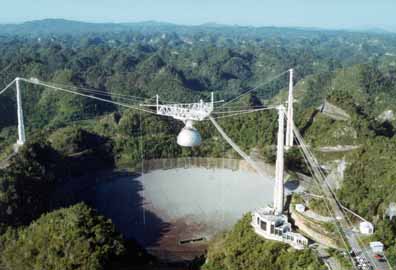“SETI 的历史 - 12”的版本间差异
小 |
|||
| 第2行: | 第2行: | ||
| − | ==''' | + | =='''第12章:SETI 到华盛顿'''== |
[[Image:Carl_Sagan.jpg|left|thumb|100px|'''Carl Sagan'''<br> | [[Image:Carl_Sagan.jpg|left|thumb|100px|'''Carl Sagan'''<br> | ||
| 第34行: | 第34行: | ||
| − | [[SETI 的历史 - 11|''' | + | [[SETI 的历史 - 11|'''第11章:NASA(美国航空航天局)的介入 ←''']] | [[SETI 的历史 - 13|'''→ 第13章:NASA 之后的SETI''']] |
==相关链接== | ==相关链接== | ||
2010年8月1日 (日) 11:13的版本
<资料来源:The Planetary Society>
第12章:SETI 到华盛顿
From the begining, MOP faced a bumpy ride. As early as 1979 Senator William Proxmire awarded the program his infamous Golden Fleece Award," given to wasteful programs sponsored by the Federal government. In 1982 Proxmire actually managed to cut all federal funding for MOP through a legislative amendment, threatening to put an end to the entire effort. The threat was averted through the timely intervention of Carl Sagan, who met personally with the Senator and convinced him that SETI was a worthwhile pursuit. Sagan then introduced a petition in support of SETI signed by many of the world's leading scientists, including seven Nobel laureates. The publicity and prestige Sagan generated kept the NASA SETI program on track for another decade.
On October 12, 1992, 500 years to the day after Columbus landed in the New World, the two NASA searches were finally launched. The Ames search began to scan its 800-1000 targeted stars from the 305-meter (1000-foot) radio telescope in Arecibo, Puerto Rico, the largest dish in the world. The JPL program began mapping the skies using the 34-meter dish at the Deep Space Communications Complex in Goldstone in the Mohave Desert. The searches were also given a new NASA designation - High Resolution Microwave Survey (HRMS).
Both searches utilized the most advanced technology available. The targeted search would analyze the spectrum between 1 and 3 GHz looking for narrow band signals. To accomplish this, its Multi Channel Spectrum Analyzer would analyze a 20 MHz wide band at any given moment, parse it into 20 million 1 Hz channels, and look for signals at bandwidths of between 1 and 28 Hz.
The JPL search was designed to map the entire sky at frequencies ranging from 1 GHz to 10 GHz. This enormous 9 GHz band would be analyzed by the Wide Band Spectrum Analyzer, designed to scan a bandwidth of 320 MHz simultaneously, and parse it out into sixteen million 20 Hz-wide channels. It would create a mosaic of 25,000 frames making up the entire night's sky. If we consider that 15 years earlier Big Ear was searching a mere 50 channels, we get a sense of the magnitude of the technological achievement involved.
But less than one year after their launch, both searches were suddenly and irrevocably terminated, victims of a new wave of Congressional budget cuts. This time it was Senator Richard Bryan of Nevada who led the charge against governmental expenditures on SETI. "The Great Martian Chase," he said, "may finally come to an end. As of today millions have been spent and we have yet to bag a single little green fellow. Not a single Martian has said take me to your leader, and not a single flying saucer has applied for FAA approval."
After an investment of around $60 million over 23 years, and less than one year of operation, NASA's SETI project was unexpectedly dead. Nevertheless, despite the crushing disappointment to SETI enthusiasts caused by the cancellation of the most ambitious search ever attempted, it can now be said that HRMS did not die in vain. The enormous resources available to NASA supported remarkable technological advances, which would have been very difficult to achieve without such backing. Furthermore, the equipment used in the Ames targeted search did not go to waste, but was passed on to the privately funded SETI Institute. The Institute then used to launch its own targeted search, the ongoing and aptly named "Project Phoenix."
Although the NASA searches were incomplete and short-lived, they completely transformed the face of SETI. Compared to the relatively amateurish efforts of previous searches, SETI became a professional enterprise conducted by experts using the most advanced technologies available. The scope and sophistication of the searches has also been increased by an order of magnitude through NASA's involvement. And though NASA is no longer an active participant in SETI, the existing SETI programs all took shape under the influence of its impressive effort.
第11章:NASA(美国航空航天局)的介入 ← | → 第13章:NASA 之后的SETI


